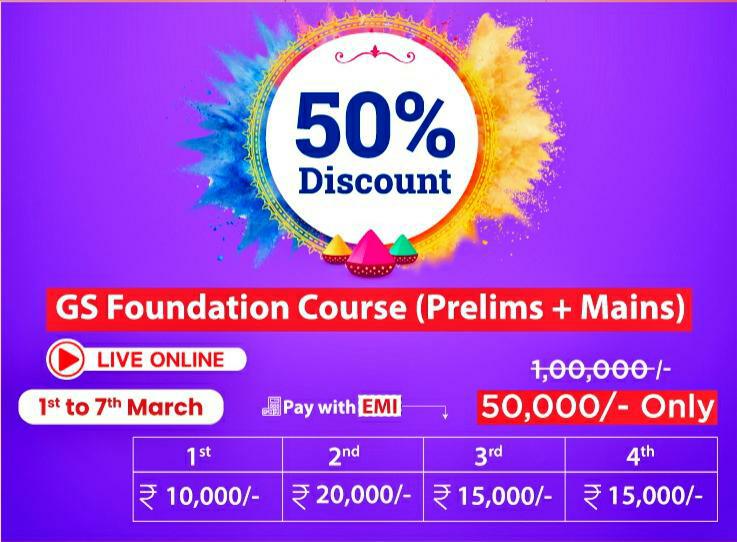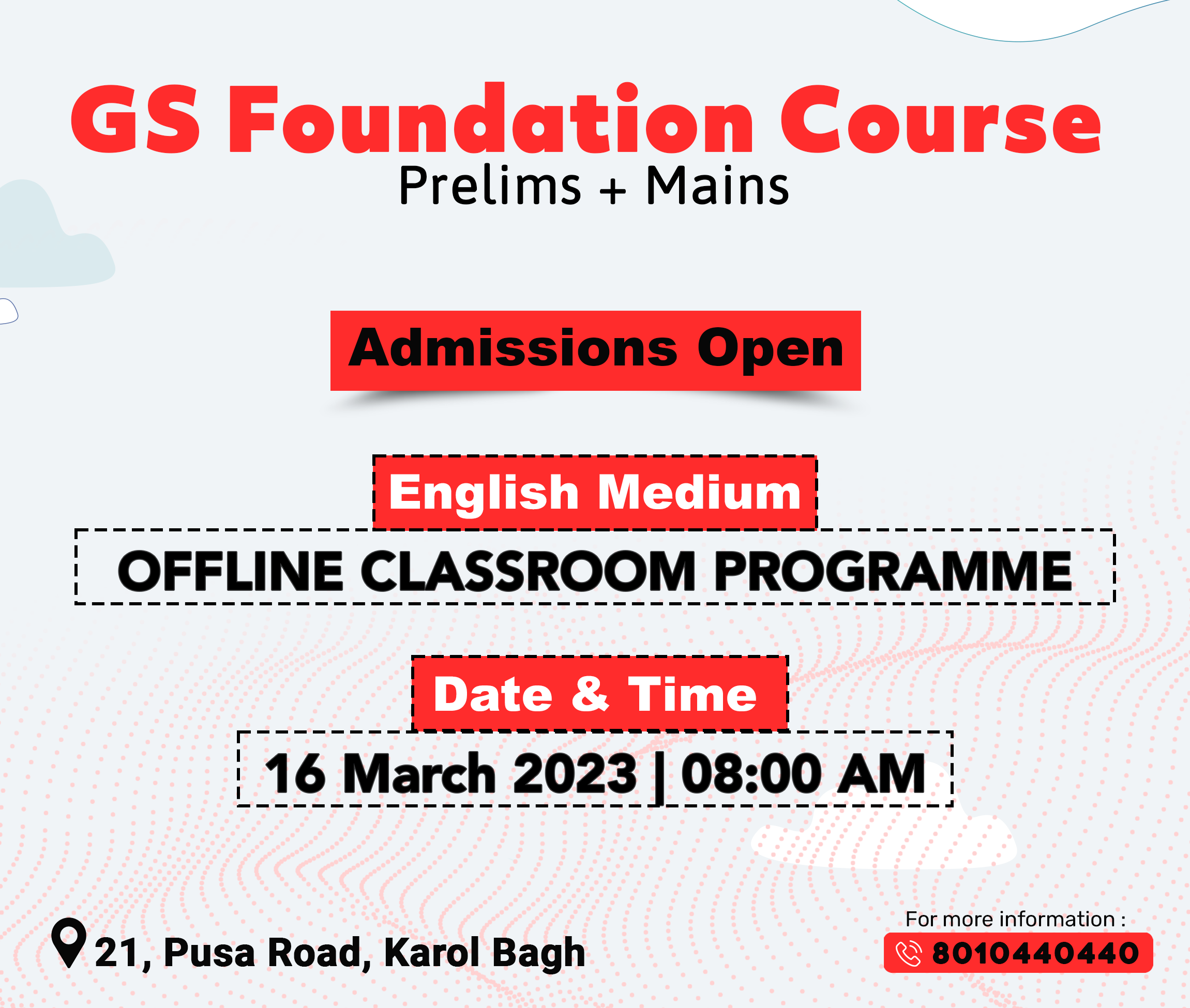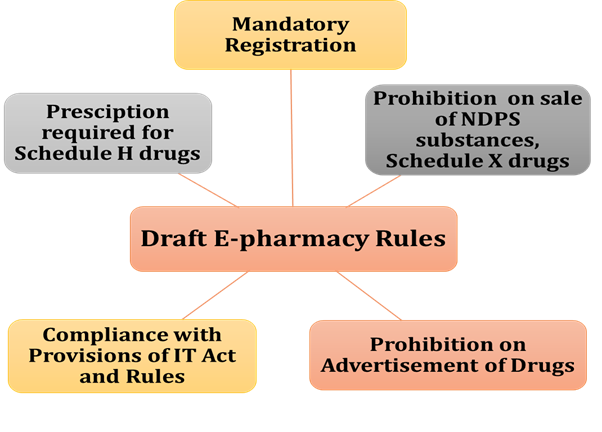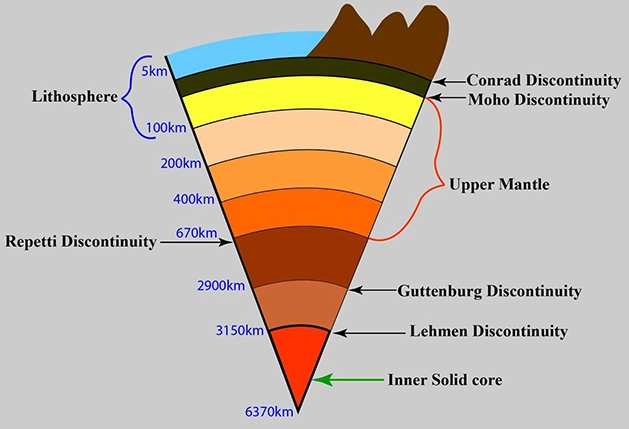Governance
The Case for Open, Verifiable Forest Cover Data
For Prelims: Tree Cover, Forest Cover, India State of Forest Report-2021, Forest Survey of India, Forest (Conservation) rules,2022
For Mains: India State of Forest Report-2021, Issues Associated with Forests in India, Government Initiatives for Forest Conservation.
Why in News?
India ranked third globally in average net forest gain during 2010-2020, but questions are being raised on reliability of its forest data by independent experts, and United Nations Framework Convention on Climate Change (UNFCCC), for mixing plantations with natural forests.
- India's forest cover has increased from 19.53% in the 1980s to 21.71% in 2021, and its total green cover, including tree cover, now stands at 24.62%.
How is Green Cover Calculated?
- About:
- Forest Survey of India (FSI) in its biennial India State of Forest Report (ISFR) presents the latest status of the ‘Forest cover’ and ‘Tree cover' of the country.
- FSI is an organisation under the Ministry of Environment, Forest and Climate Change (MoEFCC).
- India counts all plots of 1 hectare or above, with at least 10% tree canopy density irrespective of land use or ownership, within forest cover.
- This disregards the United Nation’s benchmark that does not include areas predominantly under agricultural and urban land use in forests.
- Forest Survey of India (FSI) in its biennial India State of Forest Report (ISFR) presents the latest status of the ‘Forest cover’ and ‘Tree cover' of the country.
- Classification:
- Very Dense Forest: Land with 70% or more canopy density.
- Dense Forests: All land areas with tree canopy density of 40% and above
- Open Forests: All land areas with tree canopy density between 10-40%
- Tree Cover: Isolated or small patches of trees less than 1 hectare and not counted as forest are counted as tree cover by putting together the crowns of individual patches and trees.
- Global Standard:
- The global standard for “forest” is provided by the Food and Agriculture Organisation (FAO) of the United Nations: at least 1 hectare of land with a minimum of 10% per cent tree canopy cover.
- It does not include areas “predominantly under agriculture or urban land use” in a forest.
What is the Status of India’s Forests?
- National Remote Sensing Agency (NRSA) vs FSI:
- The NRSA used satellite imagery to estimate India's forest cover in 1971-1975 and 1980-1982 and found a loss of 2.79% in just seven years, from 16.89% to 14.10%.
- Government records show that 42,380 sq km of forest land was diverted for non-forest use between 1951 and 1980, although reliable data on encroachment is unavailable.
- The government was initially reluctant to accept the NRSA's findings, but after negotiations, the NRSA and the newly established FSI "reconciled" India's forest cover at 19.53% in 1987.
- Old Forests Lost:
- Recorded Forest Areas, divided into Reserved, Protected and Unclassed forests, accounted for 23.58% of India.
- These are areas recorded as forest in revenue records or proclaimed as forest under a forest law.
- In 2011, FSI reported that nearly one-third (over 2.44 lakh sq km ,larger than Uttar Pradesh or 7.43% of India ) of Recorded Forest Areas had no forest at all and were lost due to encroachment, diversion, forest fire etc.
- Recorded Forest Areas, divided into Reserved, Protected and Unclassed forests, accounted for 23.58% of India.
- Natural Forests Shrink:
- Dense forests within Recorded Forest Areas reduced from 10.88% in 1987 to 9.96% in 2021, a one-tenth slide.
- According to Global Forest Watch, India lost 1,270 sq km of natural forest between 2010 and 2021.
- However, the FSI reported a gain of 2,462 sq km in dense forest and 21,762 sq km in overall forest cover for the same period.
What are the Issues With current Forest cover Data?
- Inclusion of Plantations in Forest Data:
- Loss of natural forests remains invisible due to inclusion of plantations, orchards, urban housings as dense forests.
- The SFR 2021, for example, reports 12.37% dense forest by including random green patches.
- Plantation forests have trees of the same age, are more susceptible to fire, pests and epidemics, and often act as a barrier to natural forest regeneration.
- Natural forests are old and therefore stock a lot more carbon in their body and in the soil and support more biodiversity.
- Plantations can grow a lot more and faster than old natural forests which means plantations can achieve additional carbon targets faster.
- Loss of natural forests remains invisible due to inclusion of plantations, orchards, urban housings as dense forests.
- Lack of Open and Participatory Data:
- FSI never made its data freely available for public scrutiny. Inexplicably, it also bars the media from accessing its geo-referenced maps.
- In 2021, it claimed to have established an overall accuracy of 95.79% in identifying forests from non-forests. However, given the limited resources, the exercise was limited to less than 6,000 sample points.
- Diversion of Forest land:
- Since the Forest Conservation Act was enacted in 1980, at least 10,000 sq km of forests have been lost to diversion for development projects.
- Recent, Forest (Conservation) rules,2022 seek to limit the scope of application of the Act, exempt certain activities from requiring permission for clearing forests and allow raising and harvesting private plantations on forest land etc.
- On paper, the carbon stock keeps growing – annually by 145.6 million tonnes of carbon dioxide equivalent since 2019 – even as the country diverted over 700 sq km of forest land during 2017-2021.
- FSI projected that India will comfortably surpass its carbon commitment to create an additional carbon sink of 2.5 to 3 billion tonnes of carbon dioxide equivalent through additional forest and tree cover by 2030 without implementing additional measures per se for increasing forest carbon sink.
- Inclusion of Residential and Urban Areas:
- According to a few independent Investigations, the bungalows of ministers and senior officers, even the Reserve Bank of India (RBI) building on Sansad Marg, Parts of the campuses of the Indian Institute of Technology (IIT) and All India Institute of Medical Sciences (AIIMS), and residential neighborhoods across Delhi are “forest” in the official forest cover map.
Way Forward
- Data transparency: It is important that maps are made available in public domain for scrutiny. We can take a clue from Brazil, which makes their forest data available on open web.
- Comprehensive Assessment: As the forest survey report is published biennially, it may be carried hurriedly. Thus, this report should be complemented with a comprehensive assessment every 5 years.
UPSC Civil Services Examination Previous Year Question (PYQ)
Q. Examine the status of forest resources of India and its resultant impact on climate change. (2020)
Q. “Policy contradictions among various competing sectors and stakeholders have resulted in inadequate ‘protection and prevention of degradation’ to environment.” Comment with relevant illustrations. (2018)


Governance
Punchhi Commission’s Report
Prelims: Punchhi Commission’s Report, CJI, Inter-State Council’s (ISC) Standing Committee, Centre State Relationship.
Mains: Punchhi Commission’s Recommendations on Centre State Relationship.
Why in News?
The Union Ministry of Home Affairs (MHA) has decided to start the process of seeking the states’ comments on the Punchhi Commission’s report on Centre-state relations.
What is the Punchhi Commission?
- The Punchhi Commission was constituted by the Union Government in April 2007 under the chairmanship of former Chief Justice of India (CJI) Madan Mohan Punchhi.
- The Commission examined and reviewed how the existing arrangements between the Union and States were functioning, as well as various court rulings regarding the powers, duties, and responsibilities in all areas, including legislative relations, administrative relations, the role of governors, emergency provisions and others.
- The Commission presented its seven-volume report to the government in March 2010.
- The Inter-State Council's (ISC) Standing Committee considered the suggestions of the Punchhi panel at its meetings in April 2017, November 2017, and May 2018.
What are the Key Recommendations of Punchhi Commission?
- National Integration Council:
- It recommended the creation of a superseding structure for matters relating to internal security (like the Homeland Security Department in the United States). This structure could be known as the ‘National Integration Council’.
- Amendment to Article 355 and Article 356:
- It advised that Article 355 and Article 356 of the Constitution should be amended.
- Article 355 talks about the duty of the Centre to protect the state against any external aggression and Article 356 talks about the implementation of President’s rule in case of failure of the machinery of the state.
- The recommendation seeks to protect States’ interest by curbing the centre's misuse of powers.
- It advised that Article 355 and Article 356 of the Constitution should be amended.
- Subjects in the Concurrent List:
- The Commission recommended that the States should be consulted through the inter-state council before bills are introduced on matters that fall in the concurrent list.
- A concurrent list is one of the three lists; in this, the matters on which both State and Centre governments can formulate laws are mentioned.
- The Commission recommended that the States should be consulted through the inter-state council before bills are introduced on matters that fall in the concurrent list.
- Appointment and Removal of Governors:
- The Governor should stay away from active politics (even at a local level) for at least two years prior to his appointment.
- There should be a say of the state’s Chief minister while making the Governor’s appointment.
- A committee should be formed that is entrusted with the task of appointment of governors. This committee may comprise the Prime Minister, the Home Minister, the Lok Sabha’s speaker and the concerned Chief Minister of the State.
- The term of appointment should be five years.
- Governor could only be removed via a resolution by the State Legislature.
- Union’s Power of Making Treaties:
- The treaty-making power of the union should be regulated with respect to treaties formulated in concern with the matters present in the State list.
- This way, the states will get more representation in their internal affairs.
- The Commission identified that the states need to be more involved in such kinds of treaties that are formulated in reference to their issues. This will ensure a peaceful co-existence between the different levels of the government.
- Appointment of Chief Ministers:
- Clear guidelines should be made with regard to the appointment of chief ministers so that the governor’s discretionary powers are limited in this aspect.
- A pre-poll alliance is to be considered as a single political party.
- The order of precedence while the State government is being formed should be the following:
- The group/alliance with the largest pre-poll alliance with the highest number.
- The single largest party with support from others.
- The post-poll alliance with a few parties joining the government.
- The post-poll alliance with a few parties joining the government and remaining including independents giving outside support.


Indian Economy
Social Stock Exchange
For Prelims: National Stock Exchange, SEBI’s ICDR Regulations, 2018, Zero Coupon Zero Principal (ZCZP) Instruments, Development Impact Bonds.
For Mains: Features of the Social Stock Exchange (SSE).
Why in News?
National Stock Exchange of India received final approval from SEBI to set up the Social Stock Exchange (SSE).
What is a Social Stock Exchange?
- About:
- The SSE would function as a separate segment within the existing stock exchange and help social enterprises raise funds from the public through its mechanism.
- It would serve as a medium for enterprises to seek finance for their social initiatives, acquire visibility and provide increased transparency about fund mobilisation and utilisation.
- Retail investors can only invest in securities offered by for-profit social enterprises (SEs) under the Main Board.
- In all other cases, only institutional investors and non-institutional investors can invest in securities issued by SEs.
- Eligibility:
- Any non-profit organisation (NPO) or for-profit social enterprise (FPSEs) that establishes the primacy of social intent would be recognised as a SE, which will make it eligible to be registered or listed on the SSE.
- 17 plausible criteria under SEBI’s ICDR Regulations, 2018 include serving to eradicate hunger, poverty, malnutrition, promoting education, employability, equality, and environmental sustainability among others
- Ineligibility:
- Corporate foundations, political or religious organisations, professional or trade associations, infrastructure and housing companies (except affordable housing) would not be identified as SE
- NPOs would be deemed ineligible if dependent on corporates for more than 50% of its funding.
- NPO Money Raising:
- NPOs can raise money either through issuance of Zero Coupon Zero Principal (ZCZP) Instruments from private placement or public issue, or donations from mutual funds.
- ZCZP bonds differ from conventional bonds in the sense that it entails zero coupon and no principal payment at maturity.
- For ZCZP issuance, the minimum issue size is presently prescribed as Rs 1 crore and minimum application size for subscription at Rs 2 lakhs.
- Also, Development Impact Bonds are available upon completion of a project and delivered on pre-agreed social metrics at pre-agreed costs/rates.
- NPOs can raise money either through issuance of Zero Coupon Zero Principal (ZCZP) Instruments from private placement or public issue, or donations from mutual funds.
- FPSE Money Raising:
- FPEs need not register with SSE before raising funds through SSE.
- It can raise money through issue of equity shares or issuing equity shares to an Alternative Investment Fund including Social Impact Fund or issue of debt instruments.
UPSC Civil Services Examination Previous Year Question (PYQ)
Q. With reference to the Indian economy, consider the following statements: (2020)
- ‘Commercial Paper’ is a short-term unsecured promissory note.
- ‘Certificate of Deposit’ is a long-term instrument issued by the Reserve Bank of India to a corporation.
- ‘Call Money’ is a short-term finance used for interbank transactions.
- ‘Zero-Coupon Bonds’ are the interest bearing short-term bonds issued by the Scheduled Commercial Banks to corporations.
Which of the statements given above is/are correct?
(a) 1 and 2 only
(b) 4 only
(c) 1 and 3 only
(d) 2, 3 and 4 only
Ans: (c)
Exp:
- Commercial Paper (CP) is an unsecured money market instrument issued in the form of a promissory note and held in a dematerialized form through any of the depositories approved by and registered with SEBI. Hence, statement 1 is correct.
- Certificate of Deposit (CD) is a negotiable money market instrument and issued in dematerialised form or as a Usance Promissory Note, for funds deposited at a bank or other eligible financial institution for a specified time period. CDs can be issued by (i) scheduled commercial banks excluding Regional Rural Banks (RRBs) and Local Area Banks (LABs); and (ii) select all-India Financial Institutions (FIs) that have been permitted by RBI to raise short-term resources within the umbrella limit fixed by RBI. Hence, statement 2 is not correct.
- Call money is a short-term, interest-paying loan from 1 to 14 days made by a financial institution to another financial institution. Hence, statement 3 is correct.
- A zero-coupon bond is a debt security that does not pay interest but instead trades at a deep discount, rendering a profit at maturity, when the bond is redeemed for its full face value. Hence, statement 4 is not correct.
- Therefore, option (c) is the correct answer.


Indian Economy
Genetic Improvement Program for Indigenous Fish Species
For Prelims: Pradhan Mantri Matsya Sampada Yojana, Fishing Harbours, Ocean currents, Marine Products Export Development Authority Act (MPEDA) 1972.
For Mains: Status of Fishery Sector in India, Issues Associated with India’s Fishery Sector, Recent Government Initiatives Related to Fishery Sector.
Why in News?
Union Minister of Fisheries, Animal Husbandry and Dairying, launched three national flagship programmes at Indian Council of Agricultural Research-CIBA Campus, Chennai.
What are the Three National Flagship Programmes Launched?
- Genetic Improvement Programme of Indian White Shrimp:
- The farmed shrimp sector contributes about 70% of India's seafood exports worth Rs. 42000 crores, but it mostly depends on one exotic Specific Pathogen-Free stock of Pacific white shrimp species (Penaeus vannamei).
- To break this dependence on one species and to promote indigenous species, ICAR-CIBA has taken up the genetic improvement program of Indian white shrimp, P. indicus, as a national priority under the Make in India flagship program.
- Shrimp Crop Insurance:
- ICAR-CIBA developed a Shrimp Crop Insurance product where the product charges differential premium based on location and requirements of the individual farmer from 3.7 to 7.7 % of input costs and farmer will be compensated to the tune of 80 % loss of input cost in the event of total crop loss. i.e., more than 70% crop loss.
- NatIonal Surveillance Programme for Aquatic Animal Diseases (NSPAAD): Government of India is implemented the NSPAAD since 2013 with a major emphasis on strengthening farmer-based disease surveillance system. The results of the first phase proved the reduction in revenue losses due to diseases, increased farmers’ income and exports.
- Phase II: Government of India has sanctioned the NSPAAD: Phase-II under the Pradhan Mantri Matsya Sampada Yojana programme of the Govt. of India. It will be implemented at pan-India.
UPSC Civil Services Examination Previous Year Question (PYQ)
Q. Defining blue revolution, explain the problems and strategies for pisciculture development in India. (2018)


Important Facts For Prelims
Proton Beam Therapy
Why in News?
Currently, there are no government facilities that offer proton beam therapy treatment in India. The treatment is considered a viable alternative to radiation for treating solid tumours, especially for head and neck cancers.
What is Proton Beam Therapy (PBT)?
- About:
- PBT is a type of cancer treatment that uses a beam of high-energy protons to destroy cancer cells.
- A proton is a positively charged elementary particle that is a fundamental constituent of all atomic nuclei.
- Unlike traditional radiation therapy, which uses X-rays, PBT can precisely target the tumour while minimising radiation exposure to surrounding healthy tissue.
- PBT is typically delivered via a large, complex machine called a cyclotron, which accelerates protons to high speeds and delivers them to the tumour site.
- PBT is a type of cancer treatment that uses a beam of high-energy protons to destroy cancer cells.
- Problems Associated with Proton Beam Therapy:
- Setting up a PBT centre is fraught with infrastructural and regulatory challenges stemming from safety concerns from the Department of Atomic Energy.
- There are concerns about safety since hydrogen is a highly volatile element, and daily checks are required to prevent leaks.
- A PBT machine is a huge contraption, up to three storeys tall and costs nearly ₹500 crore.
- Setting up a PBT centre is fraught with infrastructural and regulatory challenges stemming from safety concerns from the Department of Atomic Energy.
- PBT in India:
- Apollo Hospital in Chennai is the only centre in South and West Asia that offers PBT.
- The hospital has treated up to 900 patients, and 47% of cases were brain tumours.
- Prostate, ovaries, breast, lungs, bones, and soft tissues cancer patients have also seen promising results through PBT.
Way Forward
There is a huge unmet need for access to PBT treatment in India. The government should focus on setting up PBT centres in various parts of the country to provide more cancer patients with access to the treatment. While setting up the PBT centre, it is important to address safety concerns, infrastructural and regulatory challenges. The success of PBT in Apollo Hospital Chennai can be an inspiration for other healthcare providers to invest in this technology.


Important Facts For Prelims
SWAYATT Initiative
Why in News?
Recently, a function was held to commemorate the success of “SWAYATT”, an initiative to promote ‘Start-ups, Women and Youth Advantage Through e-Transactions'(SWAYATT) on Government E-Marketplace (GeM) in New Delhi.
What is SWAYATT Initiative?
- About:
- The initiative was launched in February 2019 under Ministry of Commerce and Industry.
- It brings together the key stakeholders within the Indian entrepreneurial ecosystem to Government e-Marketplace the national procurement portal.
- Progress So Far:
- Increased Business Opportunities: More than 8.5 lakh Micro and Small Enterprises (MSEs) have been registered on GeM portal who have been able to get business of over Rs. 1.87 lakh crore spread across 68 lakh+ orders.
- Empowerment of Women: More than 1.45 lakh women MSEs have fulfilled 7.32 lakh orders worth 15,922 Crore.
- Empowering SC/STs: Approximately 43000 SC/ ST MSEs have delivered 1.35 lakh+ orders worth 2,592 Crore on the GeM portal so far.
- Market to Farmers: 105 Farmer Producer Organisations (FPOs) can now sell more than 200 Agri products directly to the Government through GeM.
What is Government e-Marketplace?
- GeM is an Online Market platform was setup in 2016 to facilitate procurement of goods and services by the government ministries, departments, public sector undertakings (PSU) etc.
- It has been envisaged as National Procurement Portal of India.
- It has been developed by Directorate General of Supplies and Disposals (Ministry of Commerce and Industry) with technical support of National e-governance Division (Ministry of Electronic and Information Technology).
- It functions under Directorate General of Supplies and Disposals (DGS&D), Ministry of Commerce and Industry.
- GeM is a completely paperless, cashless and system driven e-market place that enables procurement of common use goods and services with minimal human interface.


Important Facts For Prelims
E- pharmacy in India
Why in News?
In February 2023, the Ministry of Health issued show cause notices to at least 20 companies, including Tata-1mg, Flipkart, Apollo, PharmEasy, Amazon, and Reliance Netmeds for selling medicines online.
What is the Current Status of E-pharmacy in India?
- About:
- The growth of e-pharmacy in India has been significant in recent years and is expected to grow at a robust growth rate of 21.28% compound annual growth rate during 2021-2027.
- The main factors driving this growth include increasing internet and smartphone penetration, rising healthcare costs, and a growing demand for convenience and accessibility.
- E-Pharmacies' Growth:
- The acute need for doorstep delivery of drugs was felt during Covid-19. Nearly 8.8 million households used home delivery services during the lockdown.
- E-pharmacies call themselves facilitators of doorstep delivery and claim tie-ups with retail chemists for vending medicines.
- The acute need for doorstep delivery of drugs was felt during Covid-19. Nearly 8.8 million households used home delivery services during the lockdown.
- Concerns:
- Impact on Quality of Drugs:
- The sale, stock, offer for sale or distribution of drugs through online, internet or other electronic platforms without a licence have potential impact on quality of drugs and pose risk to public health.
- As there arises a cope of misuse of drugs through self-medication and indiscriminate use of the drugs.
- No Statutory Backing:
- The Drugs and Cosmetics Act, 1940 regulates the import, manufacturing and distribution of drugs in India.
- However, there is no statutory definition of “e-pharmacy” either under the Drugs and Cosmetics Act, 1940 or the Pharmacy Act, 1948.
- However, the electronic sale of physician-prescribed drugs from online drug store sites is expressed under the IT Act, 2000.
- The Drugs and Cosmetics Act, 1940 regulates the import, manufacturing and distribution of drugs in India.
- Impact on Quality of Drugs:
- Regulation of E-Pharmacies:
- The Draft e-pharmacy rules were floated by the Ministry of Health in 2018.
- Multiple court orders, including those from Bombay, Madras, Delhi, and Patna High Court, have called for regulating e-pharmacies.
- The 172nd Parliamentary Standing Committee report released in June 2022, deemed it "appalling" that e-pharmacy rules had not been notified.
- The Draft e-pharmacy rules were floated by the Ministry of Health in 2018.
Conclusion
- There is a need to balance the interests of e-pharmacy businesses and offline pharmacists to create a level playing field. In an ecosystem that is moving towards a hybrid mode, all eyes are on the Ministry of Health which will have to effectively regulate the new way of doing e-commerce in the drug space.


Rapid Fire
Rapid Fire Current Affairs
Earth’s 5th Layer
Scientists, in a new study, have confirmed the existence of a 5th new layer - the innermost inner core (apart from the 4 layers: crust, mantle, outer liquid and inner solid core) with a radius of around 650 Km (inner core radius (whole) - 1,221 km).
This 5th layer is made of the same material as the inner core (iron and nickel) and the main difference between the two is the way the atoms are arranged to form a solid. This layer could have solidified and grown in a different direction than the rest of the inner core. The idea that the Earth could hold a 5thlayer was proposed in 2002.
Scientists rely on seismic waves to study earth’s interiors. These waves behave differently as they pass through diverse materials (e.g. - travel slower while passing through hot materials).
According to the analysis done, the innermost inner core slows down the seismic waves at a point between the rotation axis (from pole to pole) and the equatorial plane (perpendicular to the poles). In contrast, the outer shell of the inner core slows down the waves only in the equatorial plane.
Read More - Hidden Mantle Layers, Earthquake (Infographic)
Windsor Framework
The Windsor framework is the latest attempt at a remedy to the political complexities that have impacted trade and sentiments between the EU and the UK. It will replace the Northern Ireland Protocol - the thorniest of Brexit fallouts.
Under the Northern Ireland protocol, N. Ireland remained in the EU single market with cumbersome trade/customs inspections of goods going from Great Britain to N. Ireland hindering trade and causing food products to lose shelf life. Also, EU rules prevented some UK govt policies from being implemented in N. Ireland and the presence of an Irish Sea border upset those who seek a united UK.
The Windsor framework seeks to address the trade disruptions by permitting free trade between Great Britain and Northern Ireland through the (introduction of) use of green and red lanes for goods flowing into Northern Ireland. Green lane goods will have fewer checks and controls, including no customs checks or rules of origin. Red lane goods under the framework will be subject to full checks and controls to preserve the EU’s single market.
Read More - Brexit and Northern Ireland Issue
Adenovirus
West Bengal has recently reported 12 deaths in government hospitals due to Adenovirus infection. However, there is no evidence of a viral epidemic at present.
Adenoviruses (ADVs) are double-stranded linear DNA viruses ranging from 70-90 nanometres in size. They can cause cold-like symptoms, fever, sore throat, bronchitis, pneumonia, diarrhoea, and pink eye (conjunctivitis).
Read More - Adenovirus
El Niño
According to the World Meteorological Organization (WMO), a warming El Niño event may develop in the coming months after three consecutive years of La Niña.
El Niño is characterised by an unusual warming of waters in the eastern equatorial Pacific as opposed to La Niña which usually brings cooler waters in the same area. The phenomenon together is called the ENSO (El Niño Southern Oscillation). El Niño has a high correlation with warmer summers and weaker monsoon rains in India.
Read More - El Nino and La Nina













